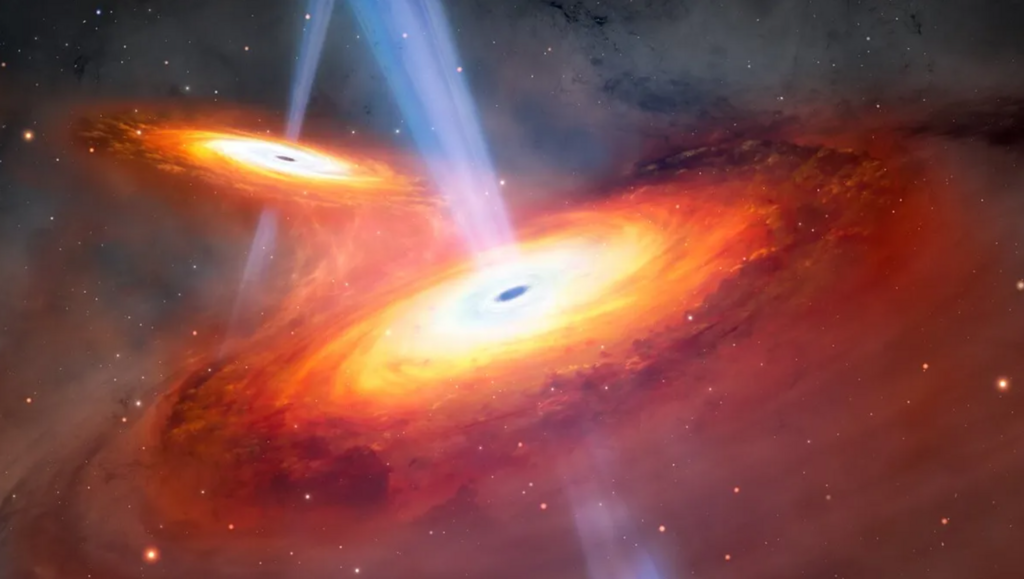Getting your Trinity Audio player ready...
Astronomers have discovered the most distant pair of merging quasars, celestial objects with supermassive black holes and superheated gas, seen as they were during the Cosmic Dawn, approximately 900 million years after the Big Bang. With a redshift of z = 6.05, indicating they are observed as they were over 12 billion years ago.
The quasar pair, each containing a supermassive black hole about 100 million times the mass of our Sun, was detected using the Gemini North and Subaru telescopes on Mauna Kea in Hawaii, and spectroscopic imaging confirmed them as the light source.
1 View gallery


Black holes were slamming into each other even in the early universe
(Photo: International Gemini Observatory/NOIRLab/NSF/AURA/M. Garlick)
Cosmic Dawn occurs between 50 million and 1 billion years post-Big Bang, marked by the Epoch of Reionization when the first stars and galaxies ionized neutral hydrogen across the universe.
This discovery provides evidence of quasar pairs during the Cosmic Dawn, a period between 50 million and 1 billion years post-Big Bang, marked by the Epoch of Reionization when the first stars and galaxies ionized neutral hydrogen across the universe. It supports the idea of evolution through mergers of supermassive galaxies and black holes.
Evidence of a gas bridge connecting the two quasars implies mirrored interactions at the galactic level, with the galaxies themselves undergoing a major merger, leading to the creation of spectacular gas structures with implications for early universe star formation.
The researchers stumbled upon the quasar pair by chance, initially observing two red dots in Subaru images that appeared very similar and extremely close. Despite their brightness, the quasars were barely detectable due to their distance. Further confirmation required follow-up work with Subaru and Gemini telescopes, and a follow-up observation with the James Webb Space Telescope is planned.
A detailed study of this discovery is published in The Astrophysical Journal Letters, with an accompanying paper submitted to American Astronomical Society Journals and available on arXiv.
This article was written in collaboration with Generative AI news company Alchemiq
Sources: Gizmodo, IFLScience.com, and West Hawaii Today.

